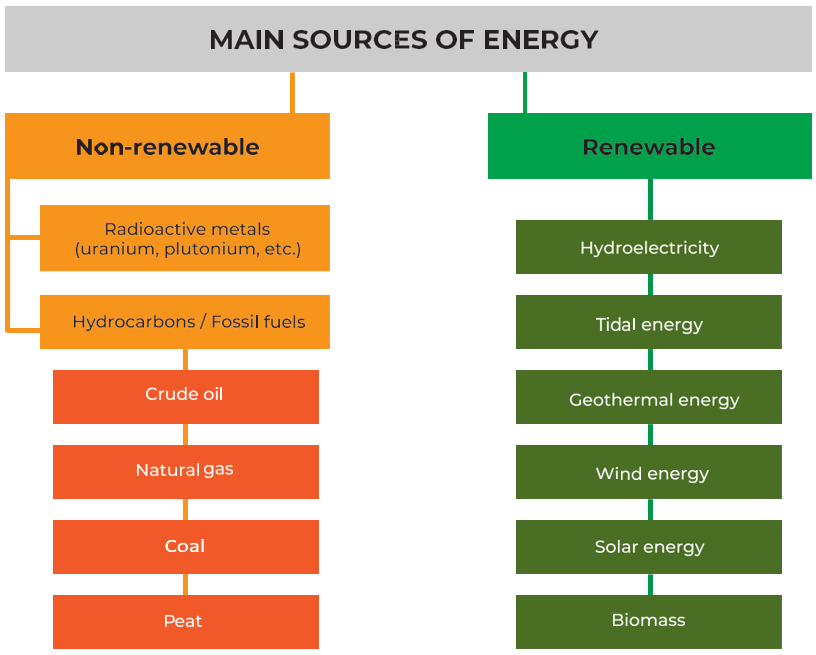People have always used energy. Scientists began to think about this process in ancient times, when they began to study the simplest form of energy – mechanical energy, which they called a ‘living force’. Gradually, other forms of energy were discovered: electrical, electro- magnetic, thermal, and nuclear. Discovering new forms of energy, people investigate where they come from and find ways to make use of them.
We use a huge number of devices and appliances in our daily lives. Television sets, computers and refrigerators all work thanks to electricity channelled into our homes, which is the kind of energy we are most familiar with. This means that electricity is central to many parts of life in modern societies and will become even more so as its role in transport and heating expands through technologies such as electric vehicles and heat pumps. The role of electricity in industry will also increase because of the electrification of some industrial processes, such as iron and steel production.
Where does electricity come from?
People learnt to make electricity by transforming types of energy, which they found in nature. Natural sources of energy on our planet are usually subdivided into two major groups: non- renewable (traditional) and renewable (alternative) (Fig. 3.1.2).
Figure 3.1.2 Main natural sources of energy

Non-renewable sources of energy are produced or replaced in nature much more slowly than they are consumed by mankind. The main non-renewable sources are coal, oil, natural gas and peat, and they are also called ‘hydrocarbons’ or ‘fossil fuels.’ Non-renewable energy sources also include radioactive metals (uranium, plutonium, and others), which are used to generate nuclear power.
Renewable energy sources draw energy from processes that occur continuously in nature. Sunlight, wind, flowing water, rain, tides, and heat rising from the earth can provide huge amounts of energy. What is more, these resources are practically inexhaustible: they will only run out in the unthinkably distant future when our solar system itself completes its life cycle. Biomass (plant fibre, animal waste, and charcoal derived from wood, which was widely used in the past) is also a renewable source of energy, as it is quickly replaced in nature.
A new fuel with a growing rate of use is hydrogen. It could be grey, blue, or green, depending on the sources from which hydrogen is produced – natural gas, natural gas with carbon capture and storage, and renewable electricity respectively (Fig. 3.1.3). While hydrogen was used in the past mostly as feedstock product serving heavy industry, it is now at the forefront of decarbonising the transportation and shipping industries.
Figure 3.1.3 Types of hydrogen, how they are produced and starting year of production



